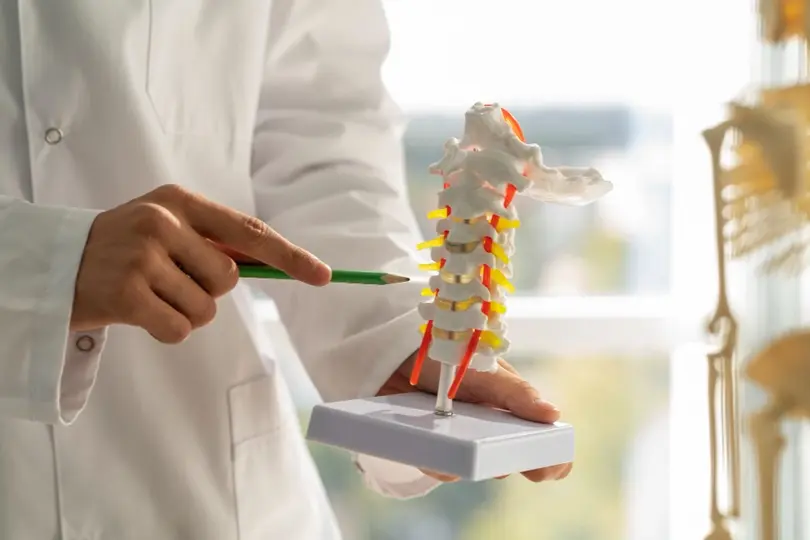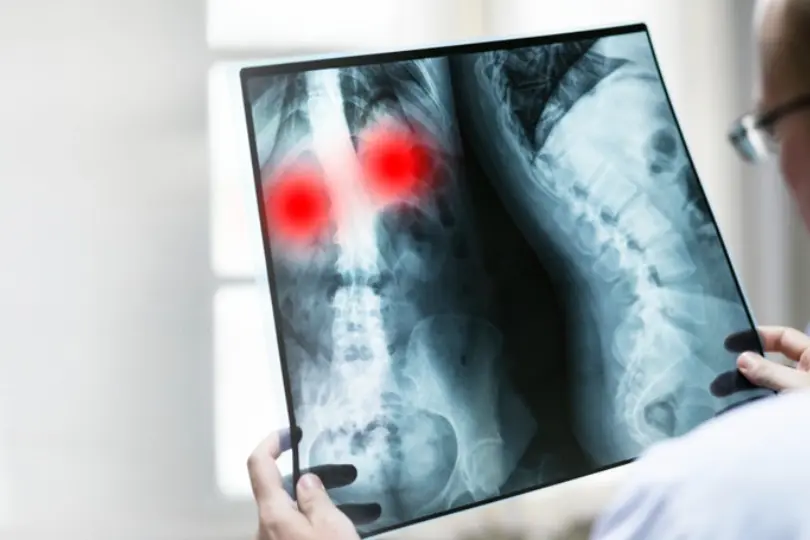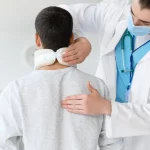
Your spine plays a crucial role in your body’s structure and function. It helps you move, guards the spinal cord, and has a big impact on your posture and balance. When your spine has problems, it can mess up every part of your life—from how you move and feel to how well you sleep and work. While some back pain might get better with rest or exercise, some spine issues need a doctor’s help right away. If you ignore these problems, they could get worse, cause lasting damage, or even leave you unable to do normal things.
Herniated Discs
A herniated disc happens when the soft inner part of a spinal disc breaks through its tough outer layer. This can put pressure on nearby nerves, leading to pain, numbness, or weakness in the back, legs, or arms. The lumbar (lower back) and cervical (neck) areas see the most herniated discs.
You might experience:
- Sharp or burning pain that shoots down your leg or arm
- A pins-and-needles feeling or numbness
- Weak muscles
- Trouble standing or walking
While some herniated discs get better with physical therapy and medicine, bad cases might need surgery. If regular treatments don’t work or things get worse, you might need an operation to take the pressure off the nerves and help you move again.
Spinal Stenosis
Spinal stenosis happens when the spinal canal gets narrow, squeezing the spinal cord and nerves. This problem often starts because of changes that come with age, like bone spurs or thicker ligaments.
Common signs include:
- Leg pain or cramps when walking
- Numb or weak arms and legs
- Trouble keeping balance
- In bad cases, losing control of the bladder or bowels
Spinal stenosis can make it hard to move around and enjoy life. Finding and treating it is key to stopping lasting nerve damage. When exercise and shots don’t help, doctors might suggest surgery to make more room in the spinal canal.
Degenerative Disc Disease
When we get older, our spinal discs dry out and become less flexible, which can lead to degenerative disc disease. This problem can result in long-lasting pain, stiffness, and less flexibility.
Things to look out for:
- Back or neck pain that doesn’t go away
- Pain that gets worse when you move or sit
- Less ability to move around
- Sudden bouts of severe discomfort
You can manage degenerative disc disease by changing your lifestyle, doing physical therapy, and dealing with the pain. But if it gets worse and makes it hard to do everyday things, you might need to think about surgery, like replacing the disc or fusing the spine.
Scoliosis and Spinal Deformities

Scoliosis causes the spine to curve in an unusual way. It can start in kids or grown-ups. When adults get it later in life, it’s often due to the spine wearing down as they age.
You might notice these signs:
- Shoulders or hips that aren’t level
- A sore back
- Getting tired after standing or walking for a while
- A spine that looks curved
If it’s not too bad, doctors might just watch it or use a brace and exercises to help. But if it’s severe and makes it hard to breathe or move around, surgery might be needed to straighten the spine and take pressure off the nerves.
Spondylolisthesis
Spondylolisthesis happens when a vertebra slides forward over the one below it. This can cause nerves and lead to a lot of discomfort.
Signs include:
- Pain in the lower back
- Pain or numbness in the legs
- Tight or spasming muscles
- Trouble walking or standing for a while
Doctors start treatment with physical therapy and medicine to reduce swelling. If the problem doesn’t get better or gets worse, you might need an operation to fix your spine and take pressure off your nerves.
When You Should See a Doctor
Not every backache needs surgery, but you should get checked out right away if you have:
- Pain that comes on fast or hurts a lot
- Numb or weak arms or legs
- Problems with balance or coordination
- Trouble controlling when you pee or poop
- Pain that doesn’t go away with rest or basic care
Putting off treatment can cause permanent damage, especially when it affects nerves. Getting help leads to better results and might keep you from needing more complex procedures down the road.
How Surgery Helps
When patients need surgery, minimally invasive methods offer a safer and more effective option compared to traditional open surgery. These techniques use tiny cuts, special tools, and high-tech imaging to reach and fix spinal problems without messing up the nearby tissues too much.
Upsides include:
- Quicker bounce back
- Less pain after surgery
- Lower chance of infection
- Smaller marks left behind
- Shorter time in the hospital
Patients in Arizona can get top-notch care from doctors who focus on minimally invasive spine surgery in Phoenix. These experts use methods like endoscopic discectomy, spinal fusion, and decompression with skill and attention to detail.
Conclusion
Spinal issues can be tricky and limiting, but they don’t need to control your life. Spotting the red flags of serious spine problems and getting help quickly is the first step towards getting better. Whether through gentle care or small surgeries, today’s medicine gives good ways to bring back movement, ease pain, and boost life quality. If you’ve got ongoing back or neck troubles, don’t hold off—talk to a spine doctor and take charge of your spine health now.
Photo Credit:
Photo 1, Credit to Freepik || Photo 2, Credit to Freepik (CC0 1.0)




